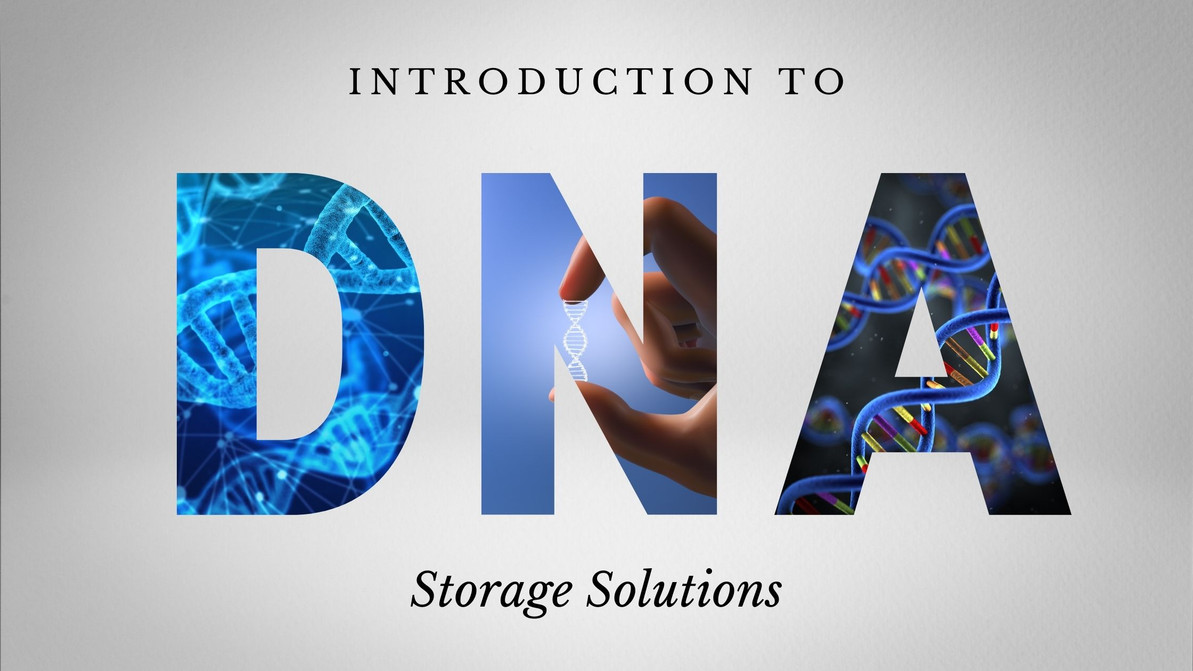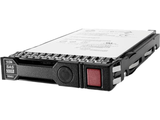Introduction to DNA Storage
In a rapidly evolving digital landscape, the quest for innovative data storage solutions has led to the emergence of DNA as a storage medium. DNA, the building blocks of life, is proving to be an incredibly promising candidate for data storage due to its high information density and longevity. This article delves into the exciting world of DNA storage, providing insights into its current state, affordability, and the advancements shaping its future.
Current State of DNA Storage Technology
Recent years have witnessed significant strides in DNA storage technology. Researchers have successfully encoded and retrieved vast amounts of digital data in synthetic DNA strands. While the potential is immense, challenges remain. The speed of writing and reading data in DNA is considerably slower than traditional storage methods, and the costs have been a deterrent for widespread adoption.
DNA storage offers a dense, stable, and high-capacity solution for storing digital data. It involves encoding information into nucleotide sequences, using A, C, T, and G to represent 0s and 1s. With its ability to store vast amounts of information in a compact space, DNA outperforms traditional hard drives. In fact, current research suggests that DNA can store up to 215 petabytes per gram. Compared to the 22TB drives commonly used in data centers, DNA storage far surpasses in terms of density. Furthermore, DNA exhibits remarkable durability, with the potential to preserve data for thousands of years under suitable conditions. As an IT professional, understanding the potential of DNA storage can revolutionize data management and archival practices.
Sustainability as a Storage Platform
One notable benefit of DNA storage is its sustainability. Currently, global data center electricity consumption accounts for around 1-1.3% of global final electricity demand, with estimates projecting a range of 240-340 TWh in 2022. However, conventional data storage technology relies on environmentally damaging rare earth metals and generates e-waste at the end of its lifecycle, presenting challenges for the industry.
In contrast, DNA storage requires less energy and offers more promising environmental prospects. A study conducted in 2023 revealed that data can be efficiently written in DNA movable-type storage systems at normal operating temperatures ranging from about 60-113°F. Furthermore, DNA molecules are biodegradable and can naturally degrade over time.
While the process of writing DNA is chemically based and not the most environmentally friendly, Biomemory's DNA storage cards utilize a proprietary biosourced writing process. They describe this process as "a significant advancement over existing chemical or enzymatic synthesis technologies." Although there might be some trade-offs, further advancements in the technology will help us gain a better understanding.
Overall, DNA storage presents an opportunity for improved sustainability in the data storage industry, addressing environmental concerns and paving the way for a more efficient and eco-friendly solution.
Current Drawbacks of DNA Storage
Reading and writing DNA is a time-consuming process. DNA synthesis writes at a slow speed, only a few hundred bytes per second. For instance, it would take several hours to write an average iPhone photo to DNA. Furthermore, reading DNA requires sequencing, which is also a time-intensive task and requires specialized scientific equipment.
Apart from being time-consuming, DNA storage is also expensive. In 2015, a study estimated that storing 83 kilobytes of data on DNA cost £1000 (approximately $1,500 U.S. dollars). Recent estimates suggest that storing one petabyte of data on DNA would cost around $1 trillion, while storing the same amount using cloud storage would cost $6,000 per month. This huge difference in costs highlights the challenges in making DNA storage commercially viable.
Currently, Biomemory's DNA storage cards are priced at €1000 (about $1,080 U.S. dollars) and can hold only one kilobyte of data, equivalent to a short email. As a commercial product, DNA storage has become even more expensive. However, it's important to note that Biomemory's cards are designed to demonstrate the technology rather than being cost-effective storage solutions.
The high costs associated with DNA storage reflect the challenges faced in bringing this technology to market. The theoretical cost per byte is significantly different from the operational cost. Nonetheless, there is hope that as the technology advances, it will become more affordable in the future. Researchers are experimenting with different encoding schemes to improve the efficiency of writing and reading DNA, which could potentially drive costs down.
Advancements in DNA Storage Techniques
Researchers worldwide are actively exploring techniques to make DNA storage more accessible and cost-effective. New methods for encoding and decoding data in DNA are being developed, with a focus on increasing the speed of read and write operations. Innovations like improved error correction codes and synthesis methods are paving the way for a more efficient DNA storage future.
Significant progress has been made in recent years regarding the utilization of DNA as a digital information storage medium. Existing strategies encode desired data, such as movies, books, or pictures, directly into the nucleotide sequence using chemical DNA synthesis. Sequence-based DNA data storage involves several key steps: encoding digital information, writing the data into new oligonucleotides, storing the DNA under specific conditions, enabling random access, reading the data using DNA sequencing, and decoding the DNA sequences back into the original digital code. Biotechnological advancements in chemical and enzymatic DNA synthesis, polymerase chain reaction (PCR), and DNA sequencing have played a vital role in facilitating DNA data storage technologies. These advancements now allow for the writing, random access, reading, and editing of data encoded in DNA sequences.
The Future of DNA Storage: Predictions and Possibilities
Predicting the future of DNA storage is both exciting and challenging. As advancements continue, it's foreseeable that DNA storage will become more affordable and accessible. It has the potential to revolutionize data archiving, ensuring the long-term preservation of critical information. The integration of DNA storage into mainstream data management practices is a possibility that cannot be underestimated.
DNA Storage vs. Conventional Storage: A Comparative Outlook
To understand the significance of DNA storage, it's essential to compare it with traditional storage technologies. While DNA storage offers unparalleled data density and durability, it currently lags behind in terms of speed and cost. The benefits of DNA storage shine when it comes to long-term archival needs, ensuring data remains intact for generations.
DNA storage is an ideal long-term solution for preserving information due to its potential to last for thousands of years, even in harsh conditions. This stability is attributed to the durability of DNA molecules, which resist degradation over time. Organizations, such as cultural institutions, can utilize DNA storage to safeguard and make accessible important artifacts, artworks, or historical documents for future generations.
Implications of Affordable DNA Storage for IT Professionals
Affordable DNA storage could have profound implications for IT professionals. It opens doors to novel data management strategies, especially for organizations dealing with vast data volumes. The potential applications span industries from healthcare to finance, where secure, long-term data storage is imperative.
Iridia, Inc., a DNA startup, is planning to revolutionize data encoding and reading using a disruptive biochemical approach with synthetic DNA. Unlike the conventional view of each DNA base encoding two bits, Iridia's proprietary chemistry allows the stitching together of multiple DNA bases as "cassettes". This unique capability enables the simultaneous writing of multiple bits and the assembly of chains of single bits.
The potential of this approach lies in its ability to select the most efficient synthesis and read formats. As a result, the cost of writing, storing, and reading data could be dramatically reduced, eventually competing with tape and HDDs. Additionally, using DNA to represent "0s" and "1s" opens up possibilities for error correction coding, similar to what tape, HDDs, and SSDs currently utilize.
The lower cost of DNA storage has the potential to significantly impact IT professionals. Despite the current higher costs compared to conventional storage technologies, the price of writing and reading data from DNA is expected to decrease over time. By 2030, the aim is to reduce the cost of writing data to $1 per terabyte, which is an impressive goal. However, it's important to note that the projected costs of writing and reading magnetic tape by 2030 are expected to be even lower. Additionally, the estimated costs of DNA storage do not include the expenses associated with reading the data.
Although DNA storage is not yet as cost-effective as other options, it holds immense promise in terms of dense data storage. If the decline in DNA costs surpasses that of other storage technologies, it could potentially become a strong competitor, particularly for archival storage. IT professionals should closely monitor the progress and advancements in DNA storage, as lower costs may make it a viable and attractive option in the future.
Embracing the DNA Storage Revolution
The rise of DNA storage, though still in its infancy, presents a revolution in data preservation methods. Leveraging biotechnological advancements and innovative encoding strategies, DNA storage promises high data density and unprecedented durability, opening new avenues for long-term archival needs. While it currently may not compete with conventional storage technologies in terms of speed and cost, its potential to become a game-changer, particularly in archival storage, is immense. As we stand on the cusp of this revolutionary shift, it is incumbent upon IT professionals and organizations at large to closely monitor advancements in this field. Preparing for the DNA storage revolution means embracing novel data management strategies, investing in research and development to reduce costs, and understanding the transformative potential that this technology holds for diverse industries. The future awaits, and with it, the exciting prospects of DNA storage.
Recent Posts
-
Accelerate Your Enterprise: Unleashing the Power of the HPE 300GB 15K RPM SAS-12Gbps Smart Drive
In today's enterprise IT environments, the demand for high-performance, reliable, and secure storage …Jan 28th 2025 -
Accelerate Enterprise Performance: Exploring the HPE 900GB 10K RPM SAS-12Gbps Hard Drive for ProLiant Servers
In the realm of enterprise computing, choosing the right storage solutions is critical for achieving …Jan 27th 2025 -
Secure and Reliable Storage: HPE 1TB 7200RPM SAS-12Gbps SFF Hard Drive for ProLiant Servers
The HPE 1TB 7200RPM 2.5-inch Small Form Factor (SFF) Digitally Signed Firmware Hard Drive is a robus …Jan 22nd 2025




